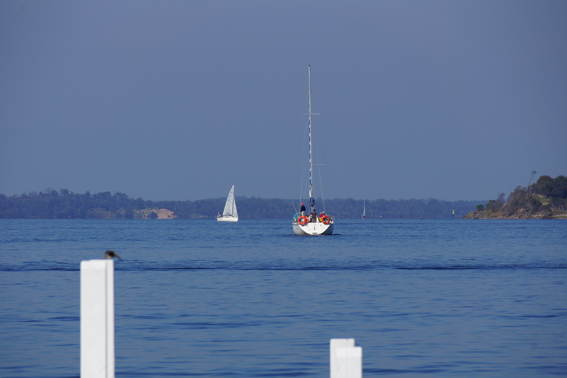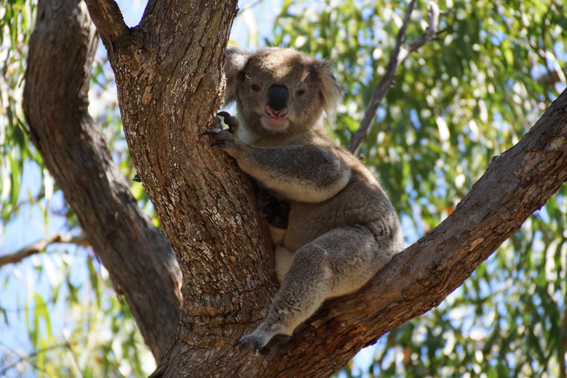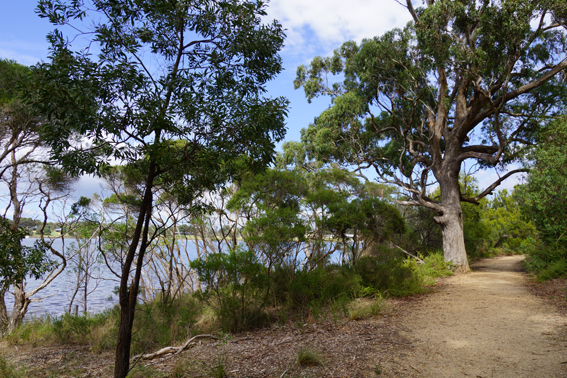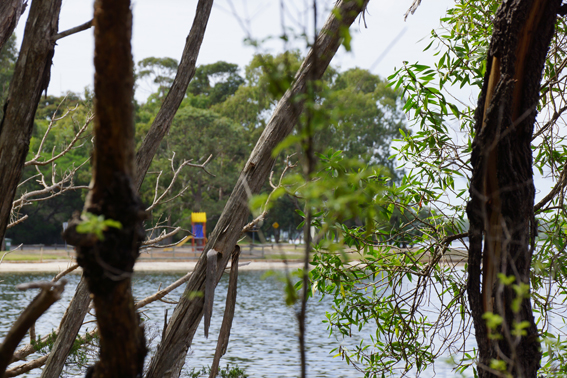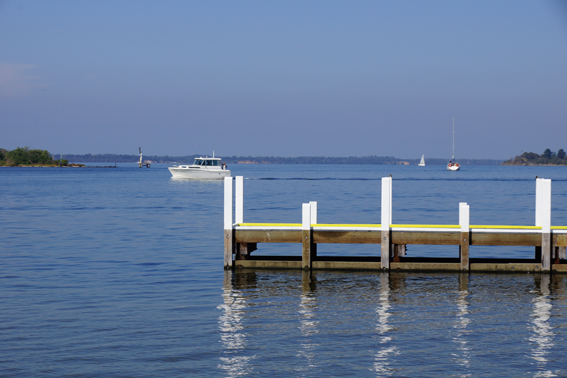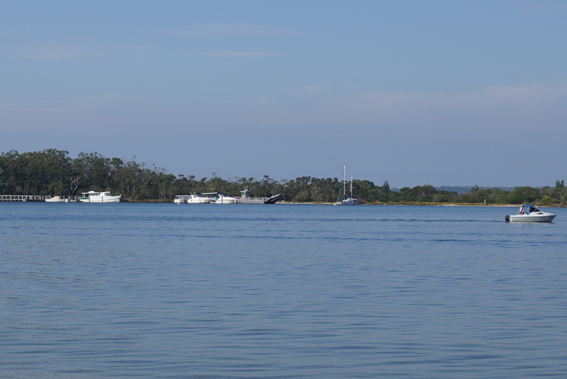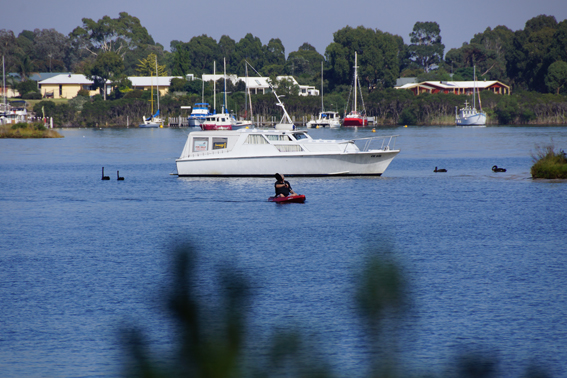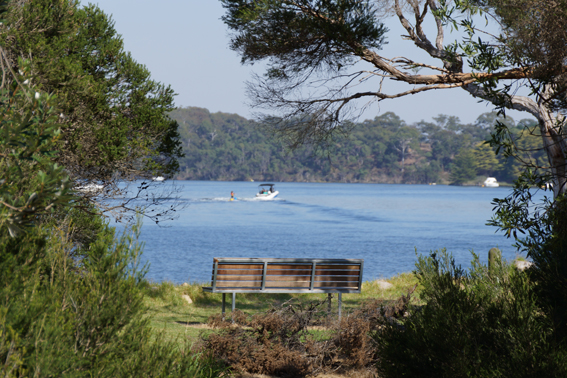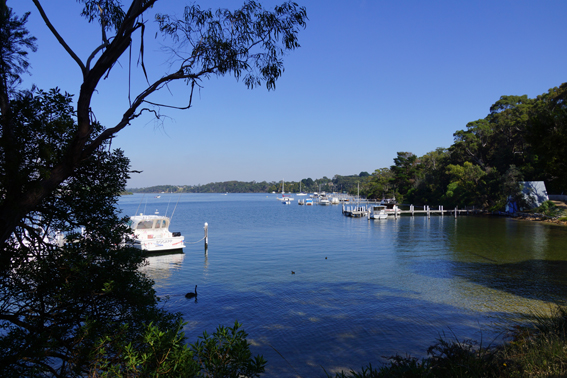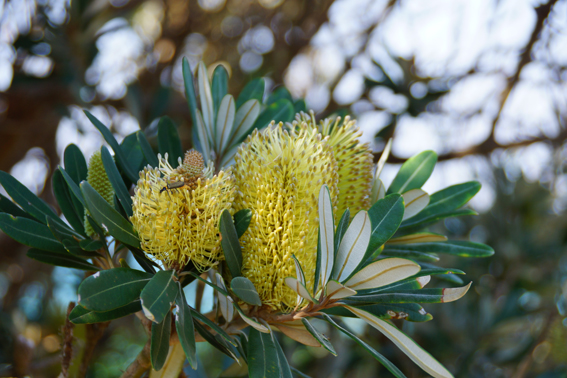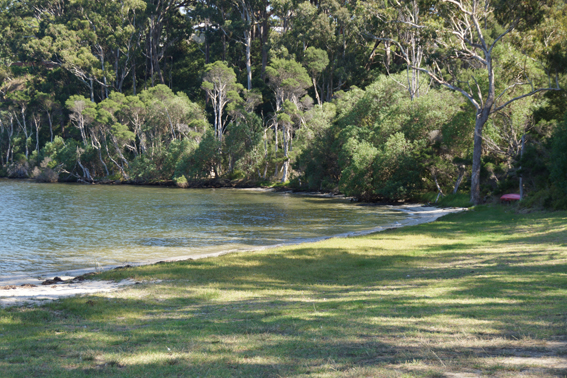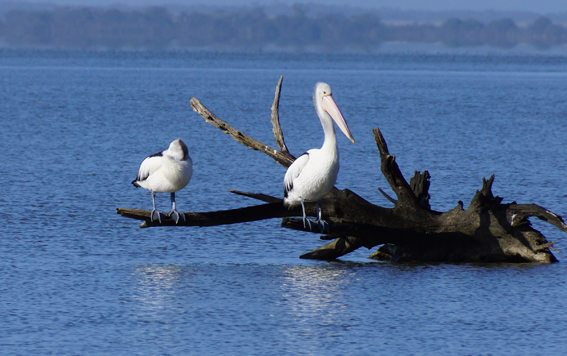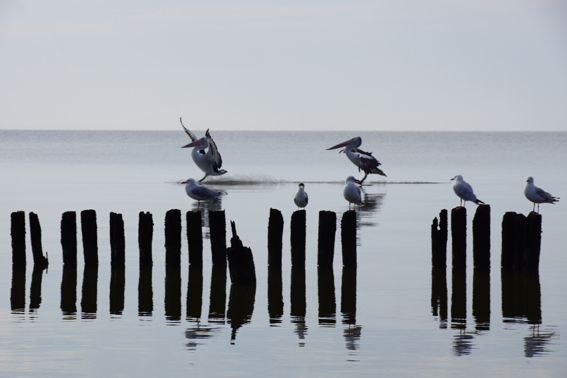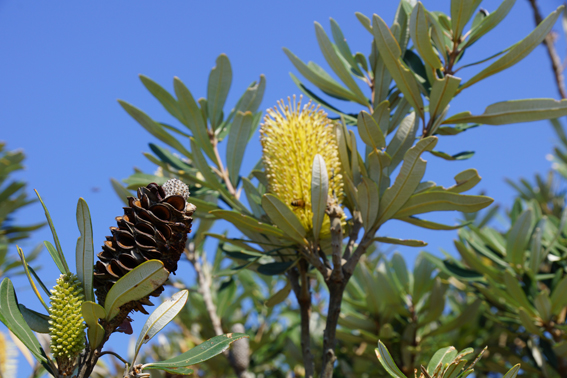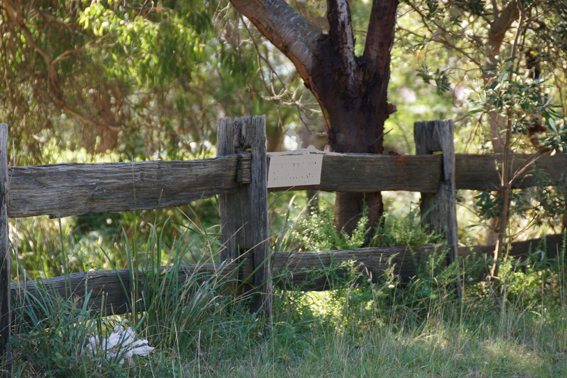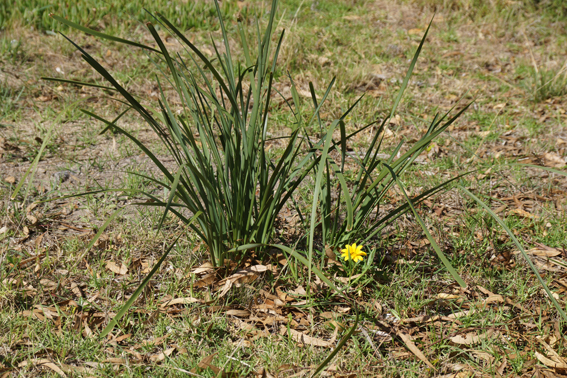Located some 285 km East of Melbourne, Victoria, the stunning Gippsland Lakes are Australia’s largest, navigable, inland waterway comprising of a network of rivers, lakes, marshes and lagoons covering an area of over 400 square kilometres – that is ten times larger than Sydney Harbour !!!
Separated from the ocean by a long and narrow coastal dune, known as the Ninety Mile Beach – flora, birds, wildlife and marine life thrive in the pristine, natural and varied environments. The lakes are generally sandy bottomed with varying shorelines of reeds and rushes to sandy beaches. Follow the link for a brief overview of some interesting Facts
The sheltered and relatively safe waters of the lakes and rivers provide water lovers with a mecca of possibilities: boating, sailing, swimming, water skiing, kayaking, kite surfing, fishing, wind surfing, etc. Imagine exploring the wide expanses of water bordered by National Parks, farms, villages, islands, tranquil rivers, peaceful coves and deserted beaches. The negligible tidal range makes the lakes perfect for boating, marinas, jetties and the like. The views across the water, the plains to the mountains in the distance is truly breathtaking. The many jetties and marinas make it easy to stop for a coffee and a bit of retail therapy . . .
Fed by five major rivers being the Latrobe and Avon Rivers into Lake Wellington, and the Mitchell, Nicholson, Tambo Rivers into Lake King – the lakes were originally a river delta cut off from the sea by the sea current action of the waters of Bass Strait, which created the coastal dune.
This unique combination of natural processes caused regular breaches of the ocean barrier by the rising water in the lakes. Once the water broke through, the water levels would equalise and the dunes would close over time and the cycle would begin anew, sometimes taking years before a new channel was formed and not necessarily in the same position as before.
The following report by John King, grandson of Governor King (the third Governor of New South Wales), recalls:
“The summer of 1846 and 1847 was unusually dry, and the owners of runs bordering the lakes were surprised to find the waters continually rising and over-flowing all the low lands and morasses; and this went on until the water in the river Latrobe was backed up as far as the Tanjil Station which is situated between 5 and 6 miles above the Latrobe Bridge. Mr Boyd Cuningham, of Roseneath, being the principal sufferer from the overflow of Lake Wellington, purchased the cutter Wave from me, and proceeded with Mr Arthur King to the Entrance, where they found a high sandbank had formed, which effectually dammed up the lake waters to a height [roughly estimated] of 9 feet above sea level. The bank was about 300 yards wide. After a few days’ work, they succeeded in making a cut so that the lakes once more flowed into the sea, but provisions falling short, they returned to Roseneath, and the trench they had cut not being wide enough was soon choked. Again Mr Cuningham accompanied by Messrs Wilkinson and Rhodes, his son, with 2 or 3 men whose names I forget, returned to the Entrance and succeeded at last in freeing the imprisoned waters. In the space of an hour a deep channel was cleaned out . . . “
– Source: Gippsland Times – 26th May 1879
This phenomenon posed huge problems to the settlers farming the fertile soils of the flood plains and to the shipping trade of the mid to late 1800’s, leading to the construction of a permanent entrance in 1889. Follow the link for more information on The Entrance – The history of Gippsland’s Steamers is also fascinating . . .
Initially, the permanent opening of the lakes to the ocean caused deleterious ecological changes, largely due to the suddenly constant increase in salinity. This situation was complicated by the the massive ecological disturbances to the river catchment areas that drained into the lakes system by farmers, logging and mining; leading to increasing sedimentation and nutrient presence in the lakes. Topped with the over exploitation of the fisheries, the result was vegetation die-back, shoreline erosion and the occasional blue-green algal blooms.
Thankfully, the recuperative powers of Mother Nature have conquered the interference of man and the lakes are once again a pristine wonderland.
‘Burrunan’ Dolphins in the Gippsland Lakes
 A new, unique and rare species of dolphin was catalogued as recently as 2011. It is wonderful to learn that the Gippsland Lakes are proudly home to this species, known as the ‘Burrunan’ (Tursiops australis) Dolphin. Port Phillip Bay, and some specific waters around Tasmania, and South Australia are the only other known habitats. Though the species is not yet accepted by the Committee of Taxomony for the International Society for Marine Mammalogy, their distinctive features do separate the ‘Burrunan’ Dolphin from other species of the Bottlenose Dolphin.
A new, unique and rare species of dolphin was catalogued as recently as 2011. It is wonderful to learn that the Gippsland Lakes are proudly home to this species, known as the ‘Burrunan’ (Tursiops australis) Dolphin. Port Phillip Bay, and some specific waters around Tasmania, and South Australia are the only other known habitats. Though the species is not yet accepted by the Committee of Taxomony for the International Society for Marine Mammalogy, their distinctive features do separate the ‘Burrunan’ Dolphin from other species of the Bottlenose Dolphin.
In short, it is their distinctive colouring that immediately identifies the Burrunan Dolphin. Their cream coloured underside extends upwards, generally surrounding their eyes (most uncommon in other species). A band of light grey around their midriff then changes to a darker grey stripe on their topside. Their heads tend to be more rounded in shape, and their noses somewhat shorter and stubbier than their relatives. Interestingly, the Gippsland Lakes Burrunan Dolphin is more closely related to the Tasmanian Burrunan rather than the Port Phillip Burrunan.
Other identifying factors are their habitat and lack of integration with other species. Though the waters in which they inhabit are generally open to the sea, they do not appear venture beyond their ‘backyard’. They reside in specific coastal bays and estuaries – though sightings high up-river of these estuaries where fresh water dominates have been recorded – most unusual for salt water Dolphin species. Perhaps it is this adaptability that saw them flourish in the Gippsland Lakes which regularly fluctuated in salinity levels before the artificial entrance was constructed ???
It is wonderful to learn that the Burrunan Dolphins have survived the sudden changes to the lakes system introduced by Europeans since occupation began in the 1840’s. Their populations are, however, dangerously small. These wonderful dolphins must be jealously protected, so, if you are lucky enough to spot a pod of Burrunan Dolphins, keep your distance to ensure their safety and well being.
Helpful Hints:
The Gippsland Lakes area is perfect for sightseeing, swimming, boating, skiing, cruising, sailing, fishing, hiking, kayaking, cycling, surfing, exploring, holidaying – just to name a few
Access suggestions include: Lakes Entrance, Loch Sport, Marlay Point, Metung, Nicholson, Paynesville, Raymond Island, Swan Reach, etc. …
Nearby Features:
– Shopping
Sorry, no records were found. Please adjust your search criteria and try again.
Sorry, unable to load the Maps API.
